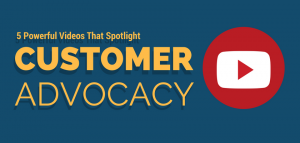The rapid ascendancy of social media over the past decade, with 71% of adults visiting social media sites through early 2014, has not gone unnoticed by nonprofits, about half of whom (48%) recognize its importance to their overall marketing strategy. Still, 67% of 9,000 small- and medium-size nonprofits in a March, 2014 survey report having no social media strategy.
That same survey identifies other strategic mistakes made by nonprofits, including:
- 38% spend only 1 to 2 hours per week on social media
- 44% have only one staff member handling social media
- 53% do not measure social media results
- 81% don’t track donor or volunteer social media accounts
This data begs some important questions: if nonprofits understand that social media is important to their success, why do so few have a comprehensive strategy? Furthermore, why are they unwilling to commit the resources necessary to make their social media campaigns successful?
Why the Disconnect?

There are several reasons nonprofits haven’t jumped fully into social media marketing. Some feel that they’re under-budgeted and understaffed, while others are reluctant to commit resources to something they don’t fully understand. But most are holding back because they assume that, although leveraging social media might help them, not doing so can’t really hurt them.
That’s a mistake, because whether your nonprofit likes it or not, people are already talking about you on social media. There’s a robust conversation taking place, but you’re not part of it.
Learning the Art of Social Media Conversation
The operative word in understanding and leveraging social media is “conversation.” Using social media is different from more traditional forms of marketing. To win at social media, you need to learn how to engage prospects, like donors and volunteers, by crafting engaging conversations.
Here are 4 tips for creating winning conversations on social media:
1. Understand Your Audience with Social Listening
You can’t have an effective conversation without first knowing who you’re talking to. What are their concerns? What kinds of information do they want? Take the time to research your audience. Utilize social listening, read their social media biographies and use tools like Followerwonk and Klout to discover how they describe themselves and who they follow. Use these data to construct social media campaigns targeted to market segments of similarly-minded subgroups.
2. Sharpen Your Social Listening Skills
The best conversationalists know when to stop talking and start social listening. Don’t make your opening gambit a full-on sales pitch about your organization’s mission and goals. By social listening to your prospects, as well as to those who influence them, you’ll gain valuable insights to tailor your marketing message. Listen every day and keep a careful record of what you discover.
3. Deliver Valuable Content
Smart conversationalists know how to give useful, practical advice and guidance. Engage your audience by giving them content they can really use. Content creation can be among the more time-consuming of social media responsibilities. Fortunately, there are a number of effective content discovery tools to make the job easier. Content-sharing platforms like Swayy provide content recommendations based on topics you list. Tools like Scoop.it will help you effectively organize content, and Klout will tell you how influential content creators are, letting you pick and choose the best content based on degree of influence.
4. Measure, Measure, Measure
If every conversation you have results in the other party running for the closest exit, you know it’s time to adjust your strategy. You have to measure results, like click-through and bounce rates. You can get help from online resources like Facebook’s Insights Tool to measure the performance of your social media campaign and make adjustments to improve it.
Conclusion
The large number of nonprofits that haven’t fully embraced social media and social listening means that you can put yours ahead of the curve by jumping in now. Learning how to converse on social media, knowing your audience, listening to their concerns, providing high-quality content and measuring your results, you can create successful campaigns to push your nonprofit to the next level.
How do you listen to social media discussions? Which social listening tools do you like most? Please tell us in the comments below.
Business Articles | Business 2 Community
(475)









